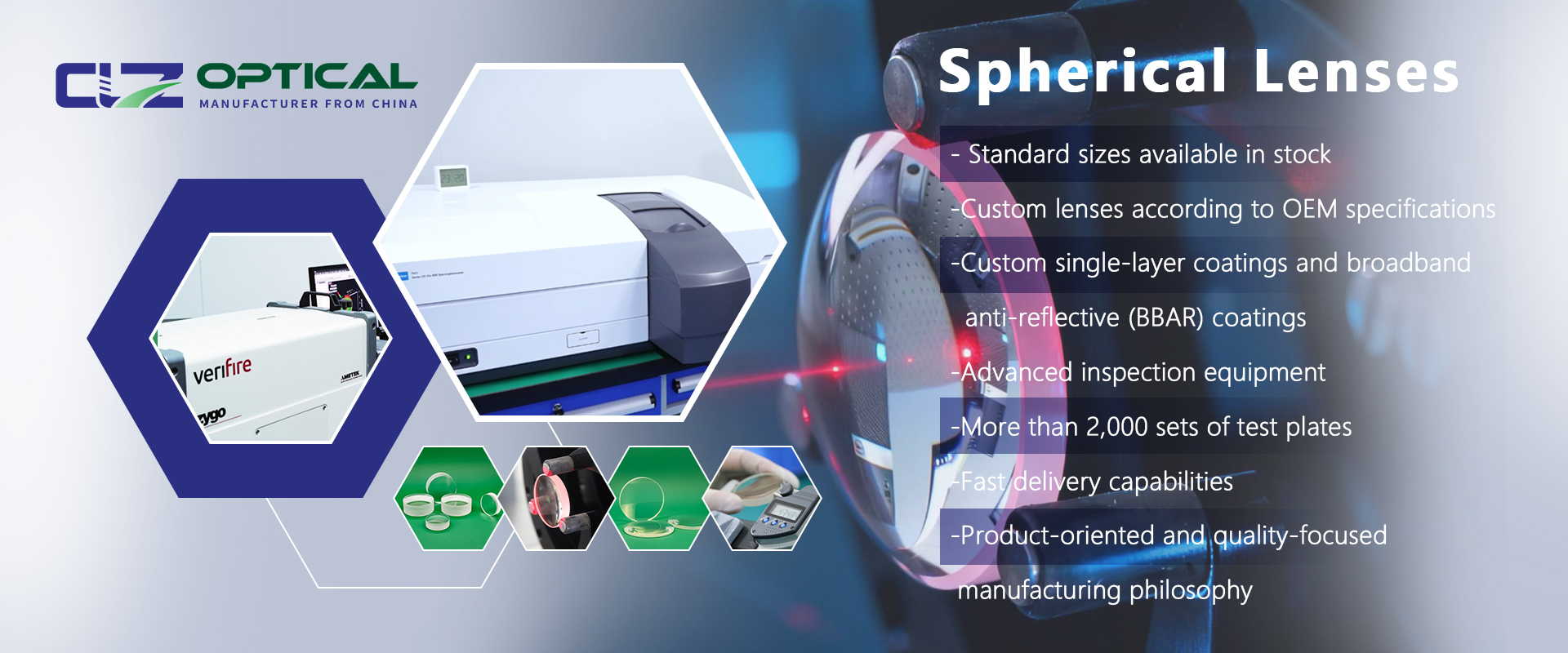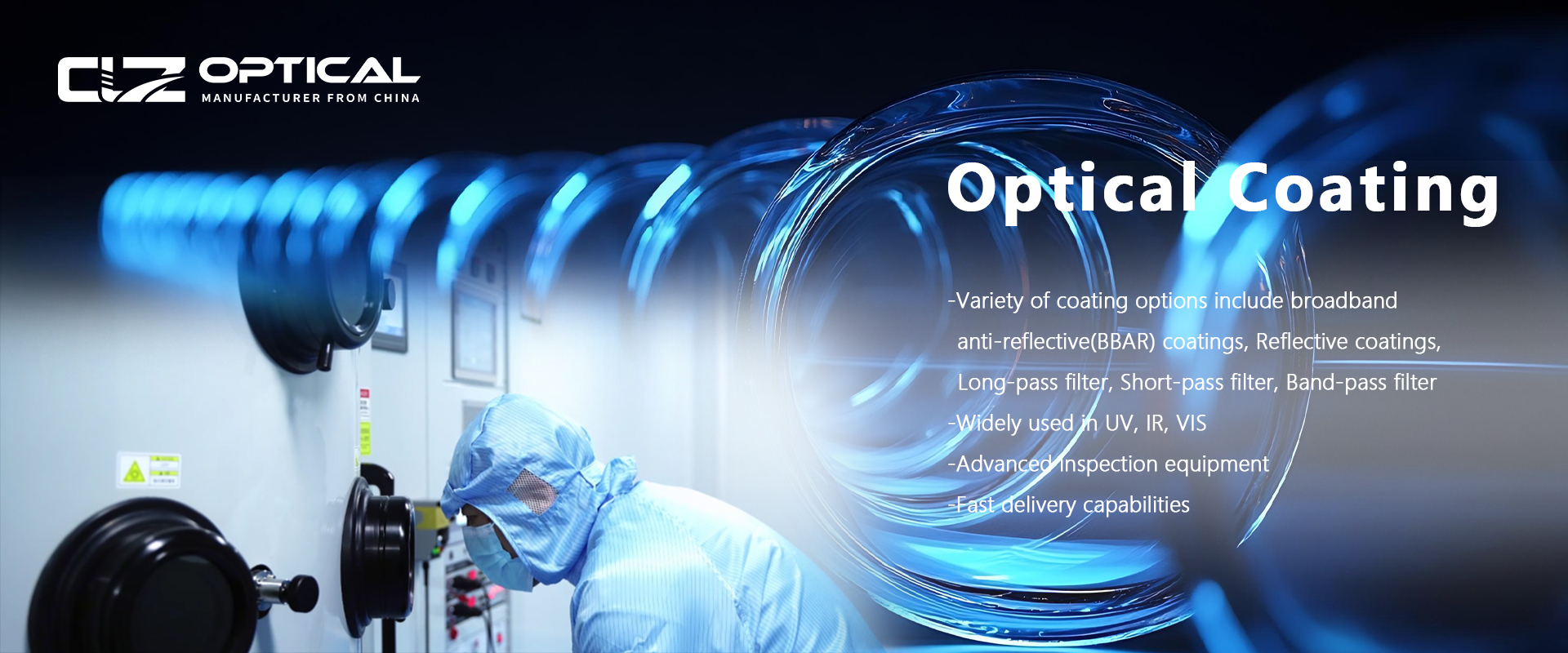Application of Optical Components in Imaging Systems
Jul. 21, 2025
CLZ Optical Co., Ltd. was founded in 2012 with a commitment to the processing and manufacturing of precision optical components. Our products are used in a wide variety of fields including optical imaging systems, optical testing, medical instruments, lasers Systems, Environmental Science & Meteorology, Instrument, Underwater Optics and more. With excellent quality and exquisite craftsmanship, our products have won the widespread praise of our customers, both foreign and domestic.
As an enterprise focusing on the field of precision optics, CLZ Optical Co., Ltd. adheres to our core tenet of “Precision in production, specialty in quality”. To ensure each product can meet the specifications of our customer’s drawings and needs, we strictly follow ISO9001 quality certification system standards. Additionally, we employ a wide array of metrological instruments including ZYGO interferometer, Agilent Cary 5000 Spectrophotometer, various instruments for measuring transmission, reflection, centration, focal length, and any other measurements our customers may need.
CLZ Optical provides customized optical components for imaging systems. Imaging lenses are used to observe objects within these systems. As core imaging elements, imaging lenses focus the image of the inspected object onto the camera sensor. Depending on the lens type, they can eliminate parallax or perspective errors, or provide adjustable magnification, field of view, or focal length. Imaging lenses enable versatile object observation to highlight specific features or properties required in specialized applications.
Based on customer designs, CLZ Optical provide custom manufacturing optical components widely used in imaging systems. OEM services, including assembly, are available upon request. Product offerings include fixed-focus lenses, zoom lenses, telecentric lenses, microscope objectives and eyepieces, cinematography lenses, and relay lenses.
2. Core Optical Components in Imaging Systems
(1) Lenses
Lenses serve as critical elements for imaging accuracy, utilizing curved surfaces to refract and converge light into images. Spherical lenses offer cost advantages, while achromatic lens groups effectively correct chromatic aberration to ensure accurate color reproduction.
(2) Prisms
Prisms precisely control light path direction and spatial distribution through total internal reflection. Right-angle prisms enable efficient 90° light path deflection with minimal loss. Dove prisms correct inverted images through rotation. Beam-splitting prisms divide incident beams using precision optical coatings. Roof prism designs significantly reduce optical system volume and facilitate interpupillary distance adjustment.
(3) Filters
Filters precisely regulate imaging signals by selectively transmitting or blocking specific spectral energies. IR-cut filters effectively suppress environmental thermal radiation noise, while narrow bandpass filters accurately extract target-specific spectral signatures to enhance detection sensitivity.
(4) Windows
Windows provide physical protection while maintaining excellent optical transmission. Fused silica windows withstand extreme high-temperature radiation, while sapphire windows exhibit exceptional corrosion and abrasion resistance, ensuring reliable optical system operation in harsh environments.
(5) Reflectors
Reflectors achieve efficient optical path control and space compression through near-lossless light reflection. Aluminum-coated reflectors deliver high reflectivity across the visible spectrum. Gold-coated reflectors maintain high reflectance in mid-to-long-wave IR bands. Dielectric reflectors provide ultra-low-loss solutions for precision optical instruments.
3. Core Functions of Optical Components in Imaging Systems
(1) Lenses
Lens groups form the foundation of imaging precision. Industrial vision inspection relies on achromatic lenses to eliminate image distortion from chromatic aberration, ensuring dimensional measurement accuracy. Biomedical imaging requires specialty lenses with high transmittance and precision coatings to efficiently capture weak fluorescence signals, enabling low-damage, high-resolution live observation. In laser processing, beam shapers and aspheric lens systems distribute laser energy into uniform spots, ensuring micron-level welding/cutting perpendicularity and depth consistency while overcoming thermal distortion from conventional optics.
(2) Prisms
Prisms are essential for complex spatial light path reconstruction. Medical endoscopes integrate right-angle prisms to alter viewing angles, overcoming limitations imposed by natural curvatures in body cavities. Security systems utilize Dove prisms to actively compensate for image rotation from gimbal mechanical jitter in real-time, ensuring reliable motion target orientation recognition. Consumer electronics employ roof prism designs to dramatically reduce binocular imaging system size, enabling ultra-thin VR optical modules.
(3) Filters
Filters specialize in spectral signal purification and noise suppression. Night vision systems in autonomous vehicles use IR-cut filters to block environmental glare, significantly improving image SNR. Pathology diagnostics apply narrow bandpass filters to precisely separate multiplexed fluorescence signals, providing critical optical criteria for accurate cancer subtyping.
(4) Windows
Windows act as protective barriers and optical interfaces in extreme environments. Industrial welding robot vision systems utilize fused silica windows to withstand intense arc radiation, ensuring continuous operation. Manned submersibles employ sapphire windows to endure immense hydrostatic pressure and seawater corrosion, enabling HD imaging of abyssal organisms at 6,000-meter depths.
(5) Reflectors
Reflectors provide near-lossless optical path control solutions. LiDAR systems use high-speed oscillating aluminum galvo reflectors for wide-angle scanning, enabling rapid environmental modeling for autonomous driving. Thermal imagers rely on gold-coated reflectors to maintain ultra-high reflectivity in MWIR bands, extending forest fire warning distances. Advanced lithography tools utilize dielectric reflectors to achieve ultra-low scattering loss, establishing the optical foundation for nanoscale IC manufacturing.
4. CLZ Optical Manufacturing Capabilities & Services
CLZ Optical specializes in providing core optical component solutions for global imaging systems. With deep expertise in optical manufacturing, mature processes, and strict quality control, we ensure every product meets precise imaging requirements, forming a solid foundation for imaging systems.
Our core capability lies in delivering comprehensive optical component support for imaging systems. CLZ Optical excels in designing and precision-manufacturing various spherical lenses, offering customized production to provide stable optical performance for imaging devices, inspection instruments, and illumination systems. For prisms, we manufacture multiple precision types—including standard prisms for beam steering and splitting—delivering reliable angular control for complex imaging paths. Our filter series enables precise spectral band control, significantly enhancing contrast and SNR in applications like fluorescence microscopy. We produce optical windows in diverse materials and specifications with excellent transmission properties, widely used in laser systems, imaging sensor protection, and optical instruments to isolate environmental interference and ensure long-term stability. Additionally, our high-precision reflectors feature exceptional reflectivity and surface accuracy, serving as critical path control elements for high-resolution imaging systems.
CLZ Optical remains focused on the core optical needs of imaging systems, grounded in sophisticated craftsmanship and rigorous quality management. We are committed to being your trusted partner in building superior imaging systems through professional optical components and services.




















